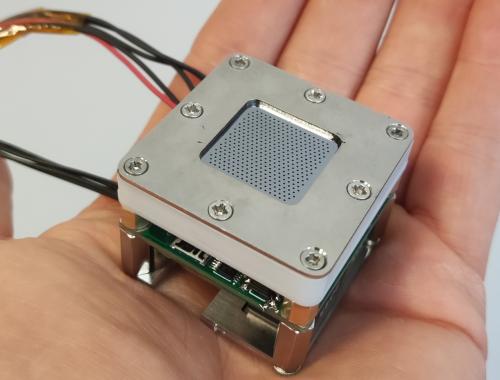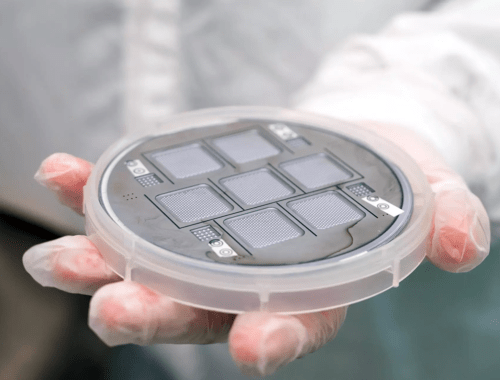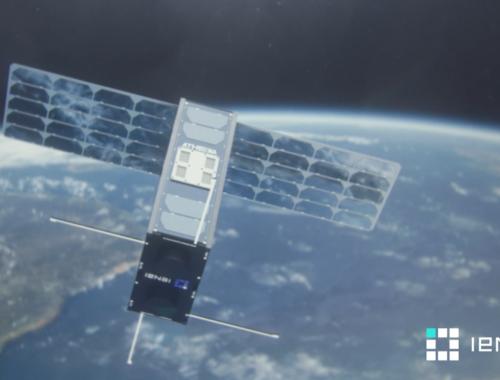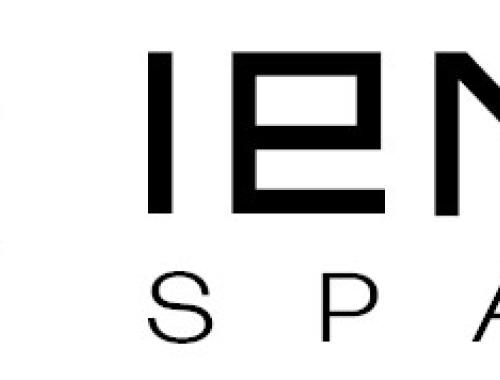IMB-CNM collaborates in a project that seeks to promote the industrial production of electric propellants for nanosatellites
The IMB-CNM-CSIC is collaborating in an initiative of the Spanish Space Agency led by the company Ienai Space with the aim of industrializing more economical and efficient propulsion systems for small satellites.

The Spanish company Ienai Space is leading the Atalaia project, financed by the Spanish Space Agency (AEE), which will lay the foundations for the large-scale production of Athena electric propulsion systems. These engines offer the space market a compact, high-power technology capable of being integrated into small satellites. The Institute of Microelectronics of Barcelona (IMB-CNM-CSIC) is one of the collaborators for the manufacture of the emission devices.
For years, the field of space propulsion has been exploring new systems to propel satellites through ion propulsion, which is lighter and cheaper. This is a technology that uses ions accelerated by electric fields to generate thrust that allows satellites to reach long distances with less fuel consumption. A prototype of these systems was embarked on the Alpha launcher, which put into orbit two picosatellites (satellites weighing less than 1kg) equipped with the technology demonstrators of the Athena engine (Adaptable Thruster based on Electrospray powered by Nanotechnology) developed thanks to the collaboration of CSIC and the company Ienai Space.
Now, the Atalaia project aims to increase the production of high-performance ion propellants to hundreds of units per year, reducing costs, increasing reliability and reproducibility, and significantly improving the performance of electrospray emitters, a technique that uses electric fields to generate a jet of ions that accelerates the propellant. To this end, the initiative seeks to integrate advanced manufacturing technologies, such as additive manufacturing, materials synthesis, photonics and nanotechnology, into the production of these propellants.
The participation of IMB-CNM-CSIC is key in its development, which, through a collaboration contract, will develop alternative manufacturing techniques for the propulsion of nanosatellites. “We will manufacture the electrospray emitters and will investigate new surface nanostructuring strategies to minimize manufacturing complexity and cost, as well as to maximize propellant emission efficiency,” explains Borja Sepúlveda, IMB-CNM researcher leading the collaboration.
This technology will be manufactured in the Micro and Nanofabrication Clean Room of the IMB-CNM-CSIC, a Unique Science and Technology Infrastructure (ICTS) recognized by the Ministry of Science, Innovation and Universities, which has extensive experience in deep silicon micromachining processes by reactive ions.
In addition, other technologies will be developed, including laser and photonics-based manufacturing for components, two-photon lithography for complex geometries, and injection molding of ceramics, metals and high-performance polymers to improve robustness. These advances will be carried out thanks to the work of a multidisciplinary team with the participation of the companies Lasing and AldoraTech, and the Universitat Politècnica de Catalunya (UPC).
After certification, Athena is expected to become a reference technology in next-generation electric propulsion, while consolidating the project partners as strategic in the global space supply chain.
Public-Private Collaboration for the Space Race
ATALAIA (Application of Advanced Lithography and Additive Manufacturing Techniques in the Development of a High Performance Ion Propellant) has been selected by the Space Technology Program (PTE) of the ESA. It has a total budget of more than three million euros, of which ESA is financing more than half through the Center for the Development of Industrial Technology (CDTI), and with the support of the European Union's NextGenerationEU recovery funds.
Ienai Space is a pioneer in the development of the first Spanish all-electric space propellant for nanosatellites and has been working closely with IMB-CNM-CSIC for years. The first emitters of the propulsion system have already been co-developed between both entities and, as a result of this consolidated relationship, a patent has been obtained, transferred to Ienai for its exploitation, and two industrial doctorates are being carried out between the company and the institution.








